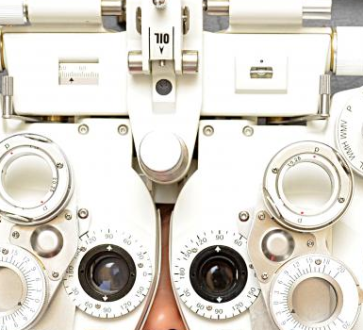A phoria is an eye misalignment that occurs when binocular vision is interrupted and both eyes are no longer gazing at the same item. A misaligned position of the eyes begins to manifest when an individual is fatigued; thus, it is not always present. The cover/cover test is an effective way to determine whether someone suffers from phoria.
Several eye disorders can impair vision and health. One such condition is decompensated phoria, which can cause distress and impair vision.
Phoria is the term for a small misalignment of the eyes, which can either be latent or manifest. Manifest phoria is detectable even during the relaxed vision, but latent phoria is only noticeable when the visual system is stressed. Both types cause visual abnormalities and symptoms.
What is Decompensated Phoria?
Decompensated phoria is a condition that manifests itself when an individual’s eyes are unable to appropriately compensate for the misalignment anymore, which results in symptoms and discomfort. It is a condition in which the eyes have difficulty maintaining normal alignment, especially when exposed to prolonged periods of close work or visual stress. Decompensated phoria is frequently accompanied by symptoms like headaches, impaired vision, and eye strain.
Symptoms of Decompensated Phoria
Decompensated phoria symptoms vary from person to person, however, they frequently involve the following:
- Eye fatigue and strain.
- Headaches, particularly after performing prolonged visual tasks.
- Double or blurred vision.
- Difficulty focusing on nearby tasks.
- Discomfort or pain in the area surrounding the eyes.
- Light or glare sensitivity.
The severity of these symptoms can have a devastating effect on an individual’s ability to work and enjoy life.
Causes of Decompensated Phoria
The emergence of decompensated phoria is frequently caused by several reasons, including:
- Prolonged near work: Reading or using a computer for lengthy periods both impose pressure on the eyes and can cause decompensated phoria.
- Vision changes: Presbyopia can worsen underlying phoria and cause decompensation.
- Eye muscle imbalance: Uneven strength or alignment of the eye muscles can lead to decompensated phoria.
- Intense visual work or exposure to strong lights can also induce stress on the visual system, leading to decompensation of phoria.
Diagnosis of Decompensated Phoria
If a person experiences symptoms of decompensated phoria, an optometrist or ophthalmologist examination becomes necessary. During the exam, the eye care specialist checks the eye alignment, assesses the visual acuity, and runs a variety of tests to detect the presence of decompensated phoria and the degree to which it has affected the vision.
Treatment Options for Decompensated Phoria
There are several ways to treat decompensated phoria, including:
- Prescription lenses: Wearing glasses or contact lenses can reduce the signs and symptoms of decompensated phoria and increase visual comfort.
- Vision therapy: This program strengthens eye muscles, improves eye coordination, and enhances visual skills. The fundamental causes of decompensated phoria can be effectively treated with vision treatment.
- Prism lenses: A doctor recommends prism lenses in certain circumstances to assist in the alignment of the eyes and to alleviate visual strain.
- Modifications to one’s lifestyle: Altering one’s way of life can help manage decompensated phoria. These adjustments include keeping proper posture, taking regular breaks throughout work, and maintaining a well-lit, ergonomic workspace.
Prevention and Prognosis
Preventive actions can reduce the effects of decompensated phoria, but they can not avoid it. Decompensated phoria can be avoided with proper visual hygiene measures including taking frequent breaks from near work and ensuring enough lighting.
If appropriate therapy and management measures are utilized, the prognosis for decompensated phoria tends to be positive. Early detection and treatment can enhance visual comfort and reduce discomfort.
 Health & Care Information
Health & Care Information 


